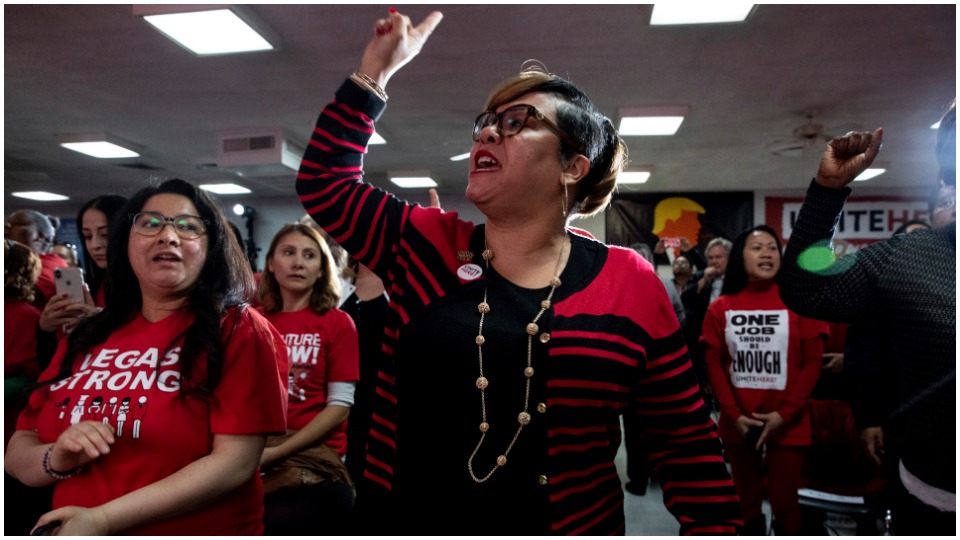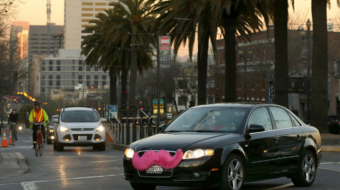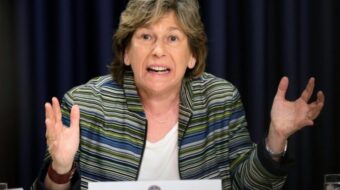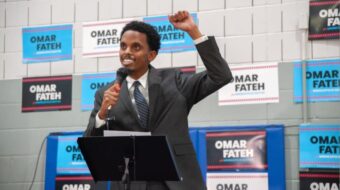
In the lead-up to Feb. 22 Caucus Day in Nevada, early voting will take place Feb. 15–18. Nevada is the third state in the country to hold caucuses or a primary election, after Iowa and New Hampshire, and the first Western state.
Early voting is a new feature for 2020, in 80 polling stations around the state. The early positioning of the state in the primary schedule is the work of the former Nevada Sen. Harry Reid. It first went into effect in 2008 during the race between Barack Obama and Hillary Clinton. Obama won that primary, with 14 delegates to Clinton’s 11. In 2016, Clinton won over Bernie Sanders.
Nevada has 2,000 precincts and 48 delegates to the national convention, 36 of whom will result from the Feb. 22 caucuses (the remainder are elected officials and party leaders). County conventions will take place April 18, and the Nevada State Democratic Party Convention on May 30.
In the aftermath of the snafu with the Iowa caucus count, the Democratic Party of Nevada decided not to use the same flawed Shadow app for its caucus. Instead, it will employ any of a number of back-up reporting structures based on paper ballots. The Nevada state Democratic Party had collaborated with the Iowa party, each contributing some $58,000, to develop the Shadow app, which was the product of a firm of veterans from the Hillary Clinton campaign.
Although the early votes will be counted as well, Nevada caucuses use a procedure similar to that in Iowa, where voters physically gather in a room for the first round of balloting.
Average polling up to Feb. 13 shows Sanders significantly ahead of second-place Biden (23.7% to 18.5%) with Elizabeth Warren trailing behind at 12.1%. Pete Buttigieg, who performed strongly in both Iowa and New Hampshire is coming in fourth right now, with 8.7%. Tom Steyer, who has spent heavily in the state, and billionaire former New York City Mayor Mike Bloomberg are in a tight race for fifth place, while Amy Klobuchar pulls in 3.9%. But it’s a fast-shifting terrain in the aftermath of voting in the first two states, so the final results may skew quite differently.
After Nevada comes the South Carolina primary on Feb. 29.
The state of Nevada is more diverse in terms of racial composition than either Iowa or New Hampshire, with 29% Latinx, 10% Black, and 10% Asian American and Pacific Islander. It is similar to the United States’ racial composition as a whole.
It has an ethnic makeup rather like neighboring California, which holds its primary on March 3. Many believe the Nevada results may influence California.
Nevada has changed in significant ways over the last few decades. It is now considered a reliably blue state. Both of its U.S. senators are Democratic women, like California, and three of its four U.S. Representatives are Democrats. The governor, lieutenant governor, state treasurer, state controller, and attorney general are all Democrats. Furthermore, its two legislative houses are majority women.
What accounts for this political transition in large part is the state’s union density. Nevada has a relatively high-end 14% unionization rate, meaning that union endorsements are critical in Nevada elections.
The Culinary Workers Union is the biggest in the state, with 60,000 members, with large percentages of women and Latinx. Politicians seeking the union’s endorsement know that union members knock on doors.
Health care is the union’s top issue, as it is for many voters, but many Culinary Workers express skepticism about Medicare for All. Their union healthcare plan is the envy of the American worker. It was won after a grueling “24/7, 6 years, 4 months, and 10 days strike line” in 1991, according to a CWU flyer recently distributed to its hotel and restaurant workers, “to make an employer pay for healthcare. We will not hand over our healthcare for promises.”
It is undeniable that the benefits those particular union workers have are better than those available under Medicare as it stands now. The Sanders campaign points out two things regarding this matter, however. First, the Sanders proposal is for an improved version of Medicare that includes things in the superior union plan and they point out that employers and insurance companies are continually pushing to reduce the benefits available in their gold plated plans. The Sanders people also argue that with companies no longer able to say that their resistance to wage increases is because of the cost of health benefits, it will be easier, during contract negotiations, to push for much higher wages. Their final argument is that the gold plated plans can be wiped out instantly if workers lose their jobs or companies lay people off. Their only protection then would be Medicare for All.
CWU has not endorsed for the primary election, and may not, also because of the health insurance issue. Its 60,000 members’ contract provides healthcare coverage for 130,000—themselves and their families. In the presidential race, the CWU will follow the lead of its parent union, UNITE HERE, or endorse separately if UNITE HERE doesn’t back anyone.
Interestingly, however, Sanders has been endorsed by several locals of UNITE HERE.

CWU’s reluctance to give up its gold-plated healthcare plan is not specifically aimed at Sanders or Warren, who both advocate Medicare for All. Still, in the most populous and diverse county in the state, which includes the city of Las Vegas, there are other constituencies. The Clark County Black Caucus has endorsed Sanders. “When you look at his platform and his consistency, over the years he has a long history fighting for civil rights and economic justice,” says Yvette Williams, chair of the Clark County Black Caucus. In late 2019, the group had endorsed Cory Booker, with Sanders as their #2 choice.
Other Nevada groups have rallied to Sanders. Earlier this week, the immigrant rights group Make the Road Action announced that it would organize for Sanders. The Clark County Education Association, the largest teachers union in the state, also backs Sanders.
The Vermont senator’s campaign has 10 offices around the state, and over 100 staffers, more than any other candidate in Nevada. The campaign’s state director, Sarah Michelsen, has said that the Sanders forces are confident about working-class and Latinx support despite some of the questions raised by the Culinary union. Working people, in the totality of their intersectional identities, are not only workers on the floor but members of larger communities with overlapping and sometimes different interests.
Nevada shows some sharp disagreements within the progressive camp, but can be expected to fully pull its weight in the general election in November. That is when working-class and other identities that people wear will come together in the greater movement to make sure Donald Trump is a one-term president.










